If you like old fashioned fudge, you need to try this Classic Vanilla Fudge recipe! Not only is it great for the holidays, but perfect all year round too!
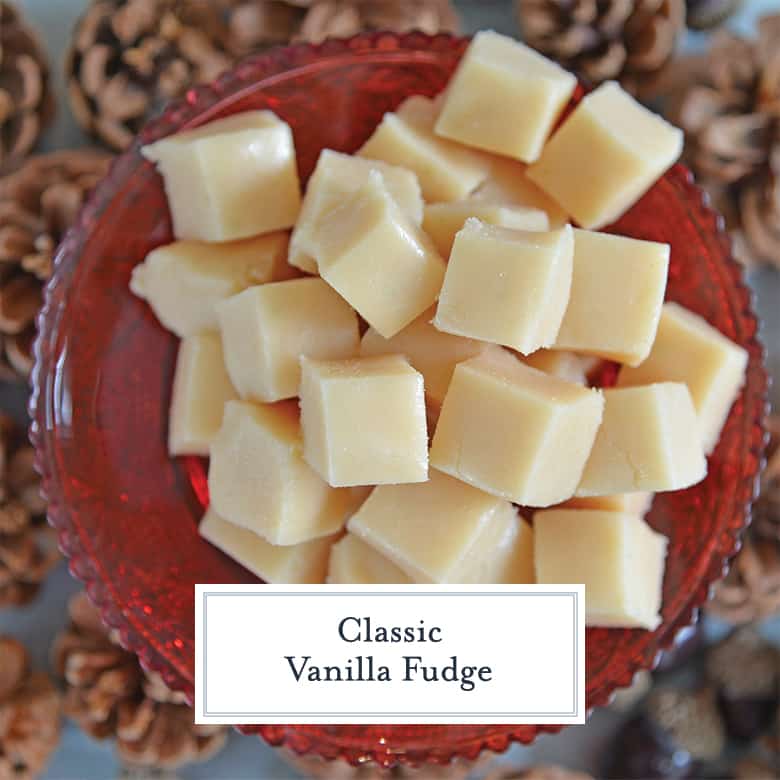
You just can’t beat a good, classic fudge recipe. Especially around the holidays.
I love all flavors and add ins, but sometimes you just need a classic vanilla. And there is no better fudge than homemade fudge!
Let me first say that making a classic or traditional fudge is hard. It seems so simple, but there is actually a lot of chemistry, patience and knowledge involved.
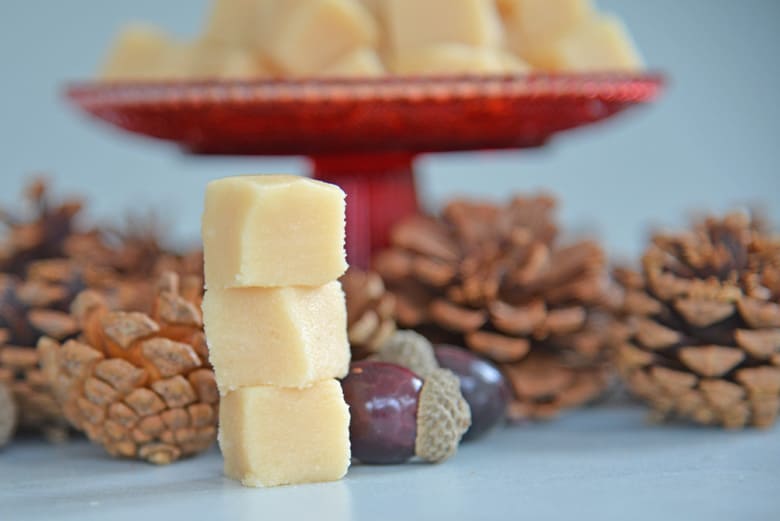
But I don’t want you to be intimidated. With the right background, tools and instructions, anyone can make delicious fudge. And I am going to share all of my favorite tips with you!
PRO TIP: Use a set pastry brush to wipe down the sides of pan to prevent sugar crystals from forming.
There are a lot of fudge recipes out there. And many take shortcuts. Don’t get me wrong, I actually make several of the easy fudge recipes myself and they are very good.
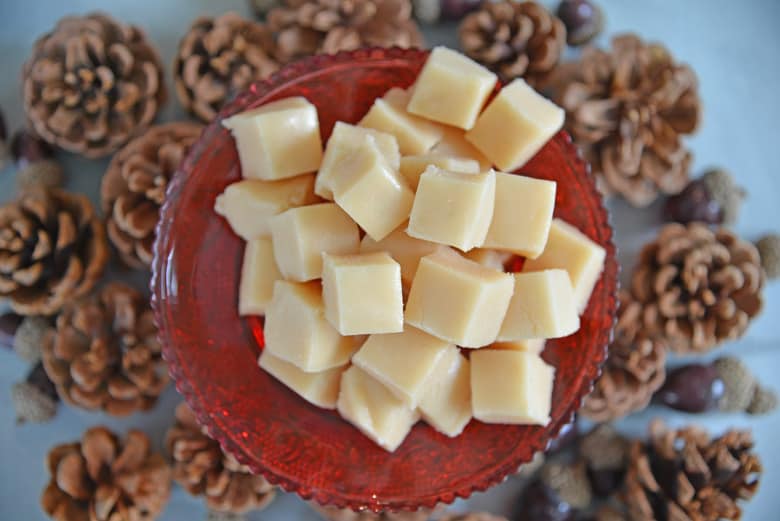
Some use marshmallow cream, like my friend over at Shugary Sweets, and others use chocolate chips and sweetened condensed milk, like my Christmas Coal Candy. Some even use whole milk, sugar and butter like my Peanut Butter Fudge.
PRO TIP: Use a wooden spoon, sticky and thick concoctions like this are easy to stir and stick less to wood than metal or plastic.
But I like to know how to make stuff from scratch and find that understanding the chemistry behind it can be quite enlightening.
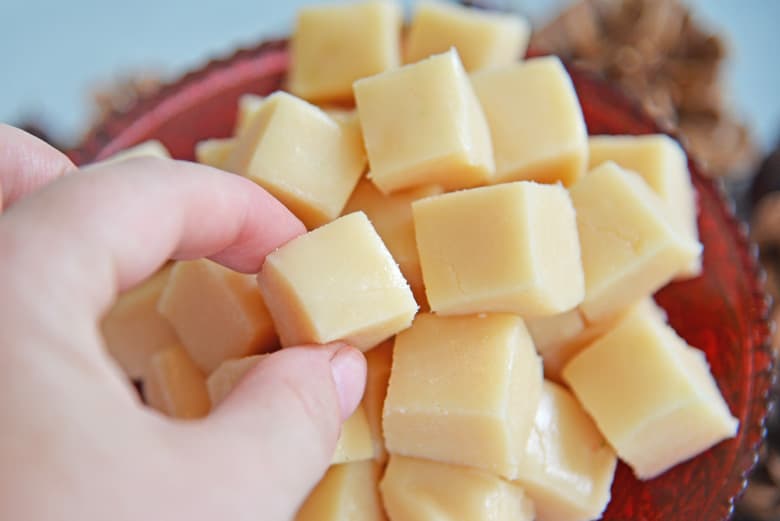
For vanilla fudge, or any traditional fudge recipe, you need to start with the mechanics. It is basically just melted sugar, but the sugar needs something to dissolve into.
PRO TIP: Don’t scrape the bottom of the pan when pouring out the mixture, if anything scalded just let it stay there.
For this you use light corn syrup, also a variation of sugar, and cream. The sugar melts and forms a soft ball, which is a stage of candy making. (See the chart below.)
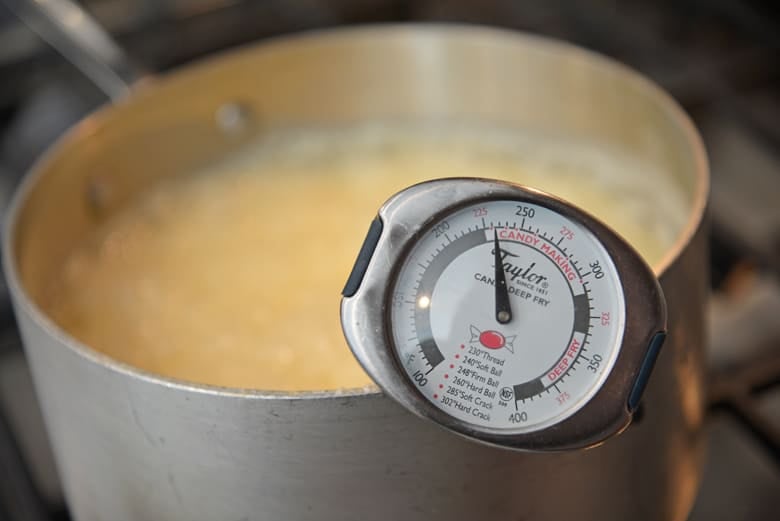
| Stage | Temperature | Concentration |
| Thread (syrup) | 230 to 234 °F | 80% |
| Soft Ball (fudge) | 234 to 241 °F | 85% |
| Firm Ball (caramel candy) | 244 to 248 °F | 87% |
| Hard Ball (nougat) | 250 to 266 °F | 90% |
| Soft Crack (salt water taffy) | 270 to 289 °F | 95% |
| Hard Crack (toffee) | 295 to 309 °F | 99% |
PRO TIP: Use a glass or metal mixing bowl and don’t touch it! I tell you to put it on a cooling rack before pouring in the mixture because after you do, the bowl is SUPER HOT. Don’t touch! Also avoid using plastic, which can melt.
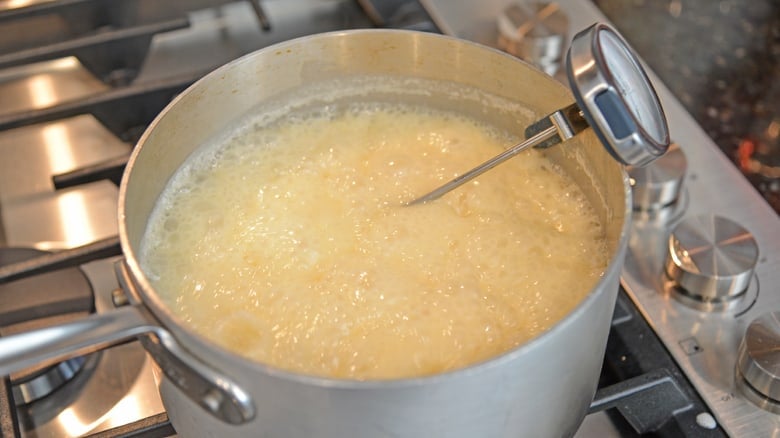
Something to keep in mind, vanilla fudge doesn’t actually need to have white chocolate in it. Fudge requiring chocolate is a misnomer. While many fudges do have chocolate or dark chocolate, this isn’t required. However, this recipe does use white chocolate.
PRO TIP: Use a stick of cold butter and wipe it on the parchment paper while flat, then place it into the 8×8 pan.
The definition of fudge is “Fudge is a type of sugar candy that is made by mixing sugar, butter and milk, heating it to the soft-ball stage at 240 °F, and then beating the mixture while it cools so that it acquires a smooth, creamy consistency. In texture, this crystalline candy falls in between fondants and hard caramels. (Wikipedia).
PRO TIP: Placing the bowl to cool on a cooling rack allows air to circulate around the whole bowl, helping the process happen faster and more even.
Make sure to use a candy thermometer to heat your fudge to correct temperture. Failing to so will result be grainy instead of smooth, melt-in-your mouth.
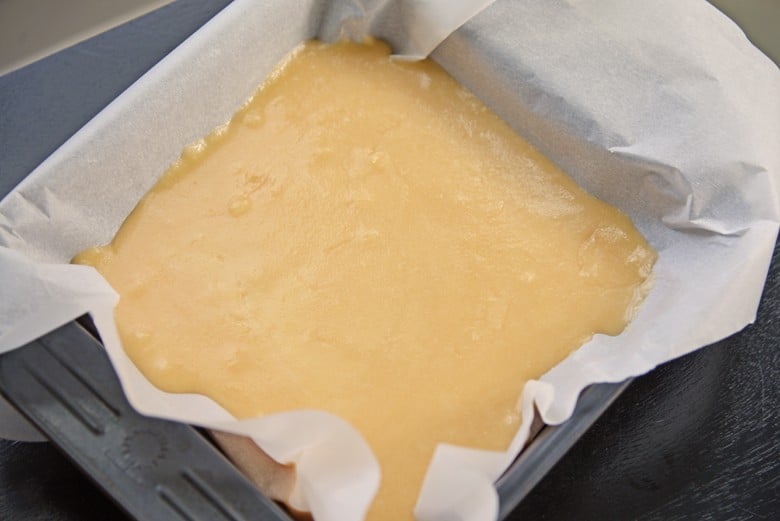
From here, we let it cool, but not too fast or else it can harden and crystalize again. It will be too hot to transfer straight to the tray, so let it come down a little in a mixing bowl.
If you use glass, be mindful that it is hot and glass it hot, so you can easily burn yourself. BE CAREFUL!
Then the fudge is transferred to it’s finally tray to harden fully into cuttable squares. The instructions may look long and tenuous, but they are really quite easy.
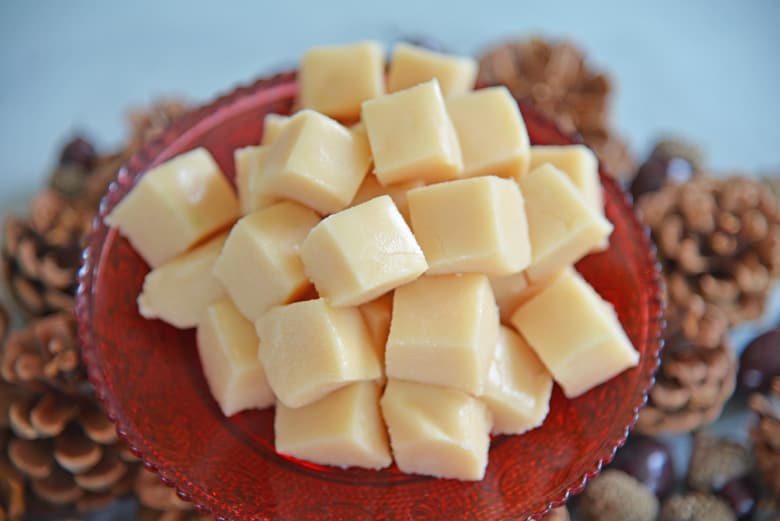
More fudge recipes:
Rocky Road Fudge Recipe
Christmas Fudge (Almond Fudge)
Easy Peppermint Fudge Recipe
Questions you might have about how to make vanilla fudge:
Why isn’t my fudge white?
Traditionally made fudge won’t be white for a simple reason, you’ve toasted the sugar and vanilla extract is brown.
There are recipes that use marshmallow fluff or sweetened condensed milk that will give you fluffy white fudge.
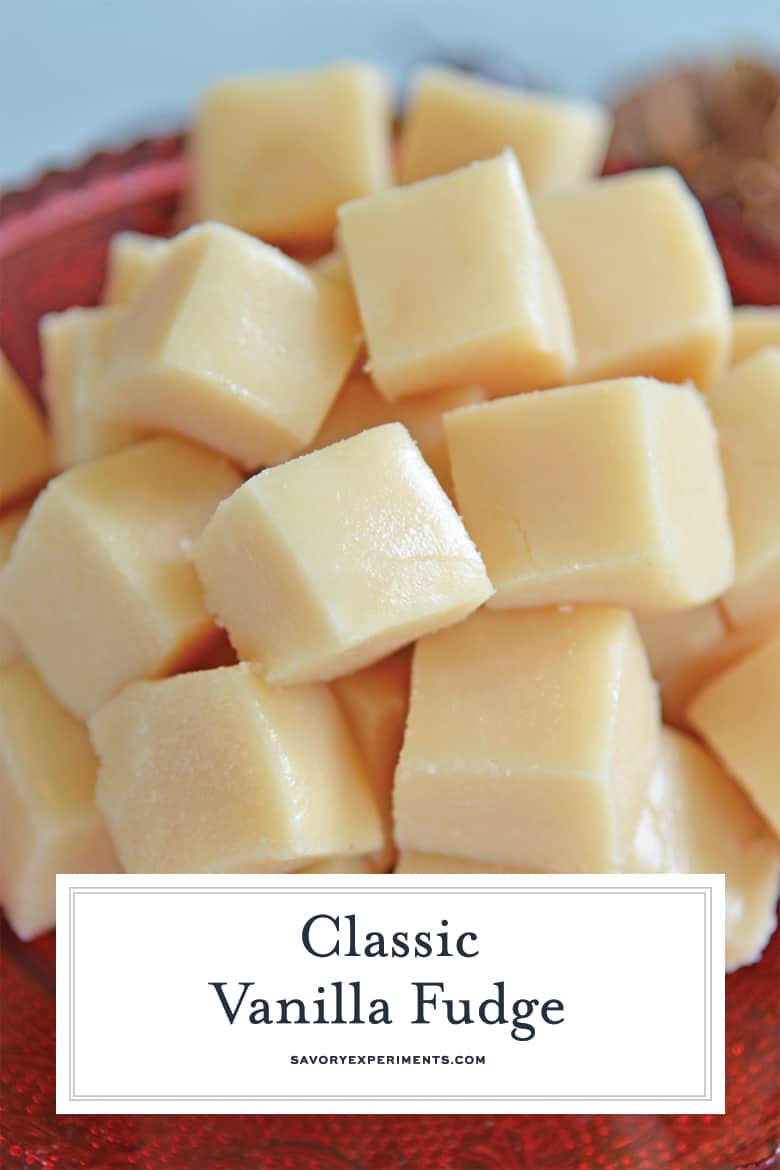
Can I use clear vanilla?
You can use clear vanilla or even vanilla flavoring, just keep in mind neither of these are real vanilla extract.
Do I have to use a candy thermometer?
Scroll up and read my several paragraphs on why a candy thermometer is imperative. The answer is yes, always yes.
When you make fudge hacks, it isn’t that big of a deal, but when you are making it the old fashioned way, you really do need one. Too little heat and it will be mealy, too much and it will be burnt and won’t set correctly.
Can I use heavy whipping cream instead of heavy cream?
Despite being used interchangeably quite often, there is a difference.
Heavy cream has a 36% milk fat while and whipping cream is only 30%. Heavy cream is better for stabilized homemade whipped cream and thickening sauces because it has a higher milk fat and thicker texture, but only slightly.
How do I store fudge?
I like to store fudge in the refrigerator, chilled, but this also dries it out faster. It can be kept at room temperature to prevent that from happening.
How long is fudge good for?
Homemade fudge is good for about a week before it starts to dry out and get all brittle. And if you love fudge like me, it will be gone way before that!
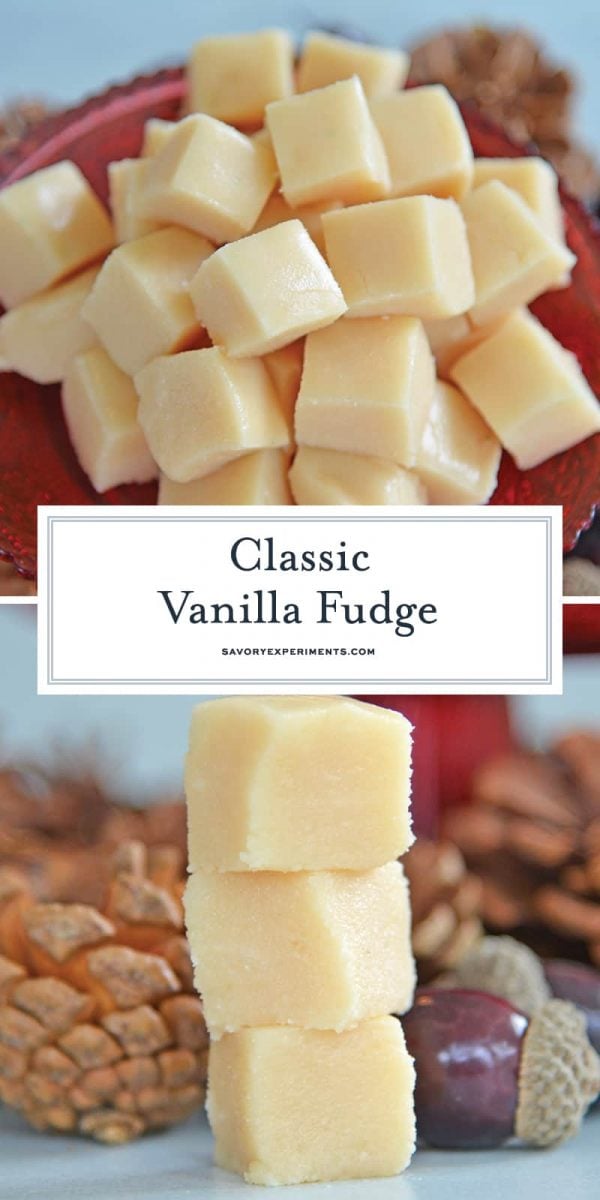
Making fudge at home doesn’t have to be challenging or time consuming. With basic knowledge of how fudge is made you’ll be a fudge making expert in no time!
Classic Vanilla Fudge
Equipment
Ingredients
- 2 1/2 cups sugar
- ½ cup white chocolate
- ¼ cup light corn syrup
- 1 ½ cups heavy cream
- ½ teaspoon fine sea salt
- 1 tablespoon unsalted butter
- 2 teaspoons pure vanilla extract or vanilla bean paste
Instructions
- Line your intended dish with parchment paper. For 1-inch thick fudge, we used a 5×8 glass dish.
- In a heavy saucepan fixed with a candy thermometer, combine the heavy cream, sugar, light corn syrup, white chocolate and salt, bringing to a low simmer until sugar and chocolate has melted, approximately 5 minutes.
- Increase the heat slightly. Do not stir or mix any longer. Allow the candy thermometer to come to 240°F (soft ball stage) and continue to cook for 1 minute. It can take 10 minutes to get to this point and the color will change from pearly white to a cream/beige.
- Carefully pour the mixture into a medium mixing bowl and then whisk in the butter and vanilla extract or paste. Do not scrape the bottom of the pan in case any of the sugar scalded to the bottom.
- Allow to cool for 10 minutes before transferring to the parchment lined dish. Cover with plastic wrap.
- Chill for at least 8 hours.
- When ready to cut, lift the parchment out of the dish and cut into pieces.
- Store in an airtight container in the refrigerator.
- If you’ve tried this recipe, come back and let us know how it was in the comments or star ratings.
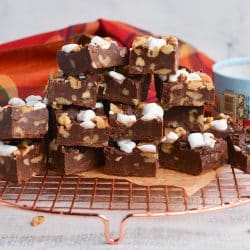
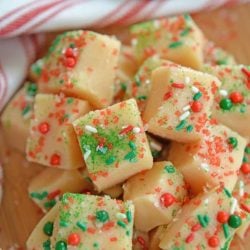
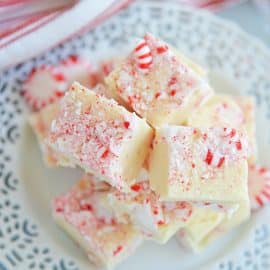
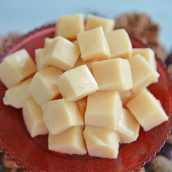
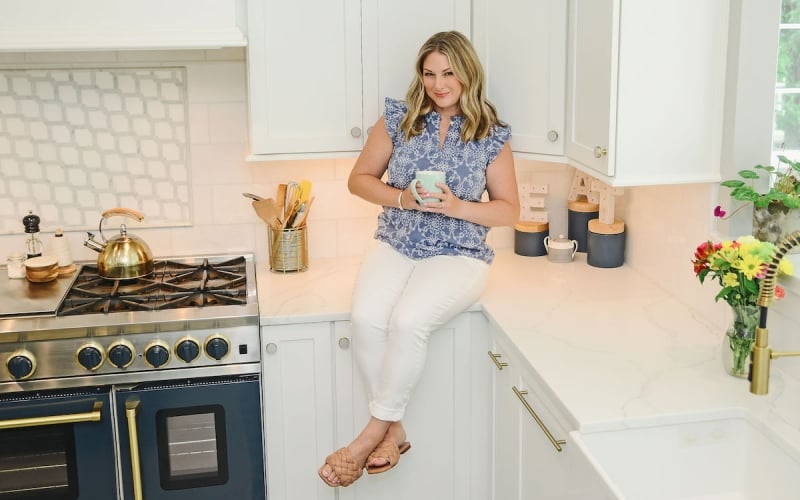
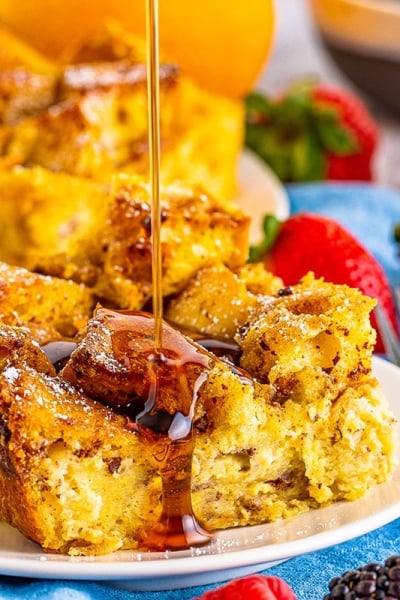
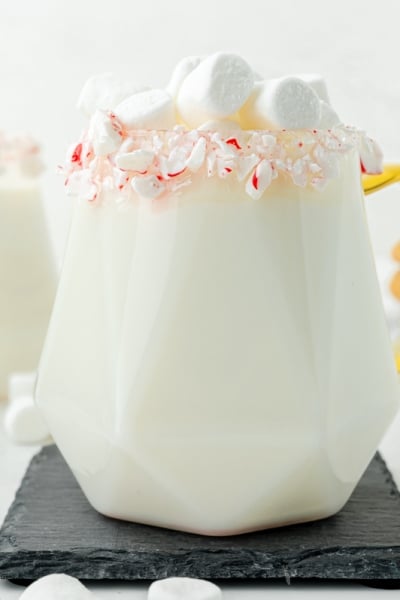
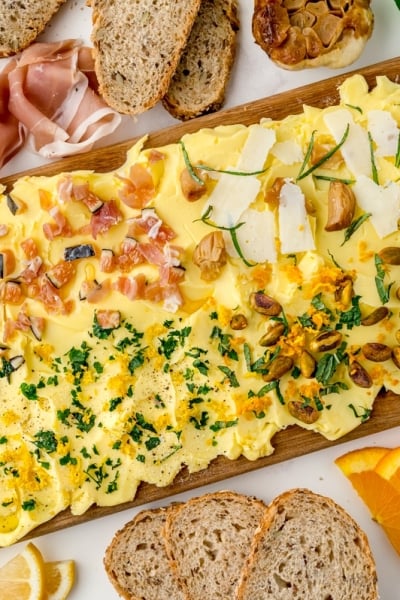
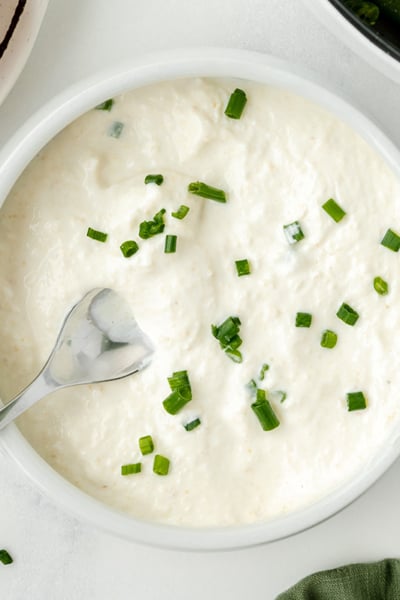













Ok 😑 First attempt failed. Followed the recipe exactly. I think the misstep falls in step 5. Step 5 in this recipe has a typo missing significant information. What is supposed to be happening for 10 min? Is it supposed to rest for 10 min? Are you supposed to beat it for 10 min?
Thank you for catching that! It’s to allow it to cool, but that usually is not the step that people get tripped up- it’s the making sure it gets to the right temperature and for the right amount of time, which lets enough water evaporate out for it to harden and the sugars dissolve. Fudge making is tricky!
Did you use a candy thermometer?
Can this recipe be doubled?
Sure can! I actually just made it this past week and doubled it in a smaller pan to make it thicker. About to add those notes 🙂
Hi, I saw that you used Ghirardelli white chocolate baking bar, so when you say “1/2 cup” in the recipe, do you mean 4 oz by weight? In other words, did you use a 4 oz. bar?
Yes.
In the stick of butter ingredient, I guess I don’t understand if you cut a tablespoon from that after greasing the parchment paper and use the rest of it somewhere in the recipe, I just can’t get it, thanks.
Hi Jo- it’s only 1 tablespoon of butter and more for greasing, not a whole stick of butter.